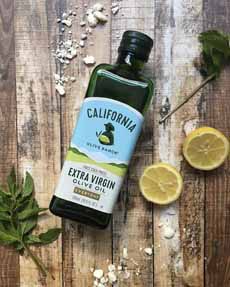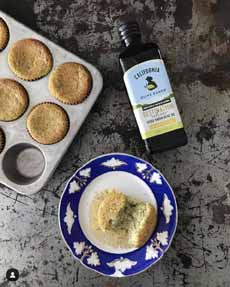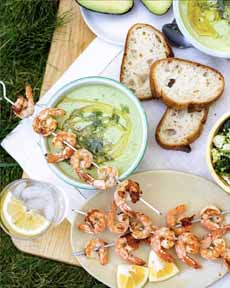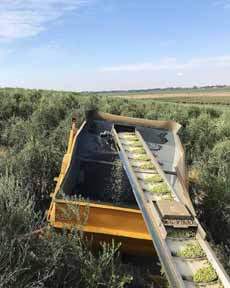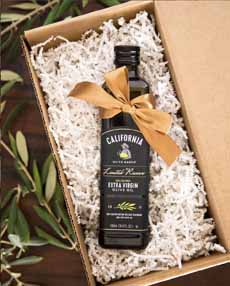FOOD 101: Check Your Extra Virgin Olive Oil I.Q.
|
Ready to test your extra virgin olive oil chops? See how many of these questions you can answer correctly. Thanks to California Olive Ranch for the test and photos. Their premium olive oils are so delicious, you can drink them from the spoon (two tablespoons a day are recommended by the FDA for heart health). Before you buy an oil labeled “extra virgin,” check the label for a seal from a sensory and certification panel, like www.appliedsensory.com/, that says “Certified Extra Virgin.” If there is no seal, check the ingredients label. The only ingredient listed should be extra virgin olive oil. A few years ago, Dr. Oz popularized the so-called “fridge test” on his nationally syndicated TV show. But, according to olive oil experts, that test is “unreliable in judging whether an olive oil is truly made from olives, nor does it provide information on the quality of the oil.” In our experience with a dozen different types of oil, from avocado to pumpkinseed to sesame, most will solidify in the fridge the different culinary oils. A. Light Olive Oil Answer: B The amount of fat and calories in all olive oils (and other culinary oils) are the same. Extra virgin olive oil has the greatest amount of phenolic compounds, which are strong antioxidants and radical scavengers. EVOO is thus the healthiest olive oil. A. Quality Answer: D Color is an unreliable indicator of quality, freshness or purity. Good oils come in all shades, from bright green to gold to pale straw, based on the type(s) of olive, ripeness and other factors. Plus, unscrupulous producers can doctor the color by adding chlorophyll, to get the green tint that many customers think represents “quality.” One reason people may have been encouraged to go for the green: It has been widely reported that a green color may indicate higher levels of antioxidant polyphenols. Flavor and aroma are better gauges of quality. When you smell and taste an extra virgin olive oil, it should taste like fruit (the olives) and fresh herbs, ranging from mild to complex. A. Baking Answer: All of the above! Home cooks in the Mediterranean have been cooking and baking with extra virgin olive oil for centuries. High-quality extra virgin olive oil from a top brand like California Olive Ranch has a smoke point of upwards of 425°F, well above the ideal frying temperature of around 350°F. A general rule of thumb: The higher the quality of the oil and the fresher it is, the higher the smoke point will be. Extra virgin olive is some of the freshest and highest quality oil available, full of antioxidants to help hold its form longer. Lower quality oils with a high free fatty acid content, on the other hand, will smoke at a lower temperature. A. Display it out on the counter. Answer: C Some cooks like to have different extra virgin olive oils for different recipes. California Olive Ranch’s Destination Series (photo # 1) is a line of workhorse extra virgin olive oils. |
|
|
|
At the other end of EVOO prices, their Reserve Collection of extra virgin olive oils, made from the best, ripest olives, have a more pronounced olive flavor and complexity that are great for finishing, dipping and drizzling (and drinking two tablespoons from the spoon!). Olive oil does not get better with age! If you wait to use your a fine EVOO only for special occasions, it may go rancid before you’re able to finish it. Pay attention to the “best by date” on the label, and use the oil within 1-2 months, once opened. Be sure to store the bottle away from light and heat, two factors that will break down the oil and make it rancid more quickly.
|
||
